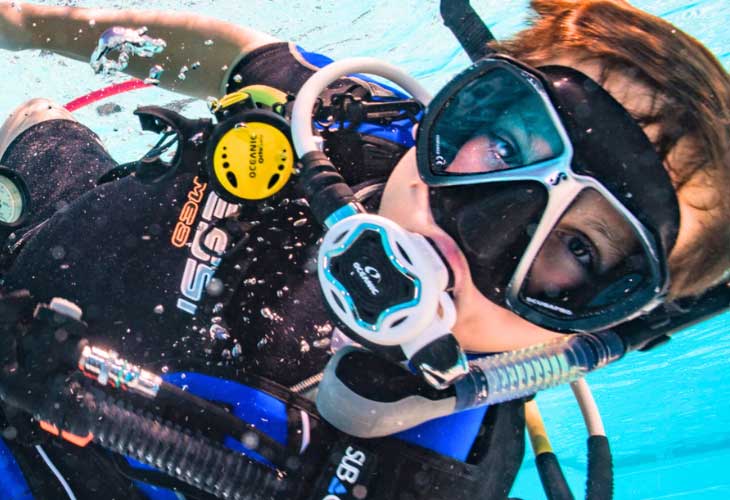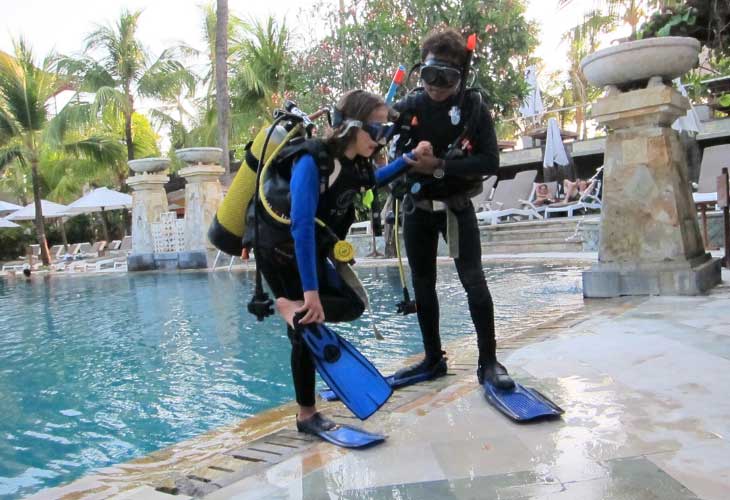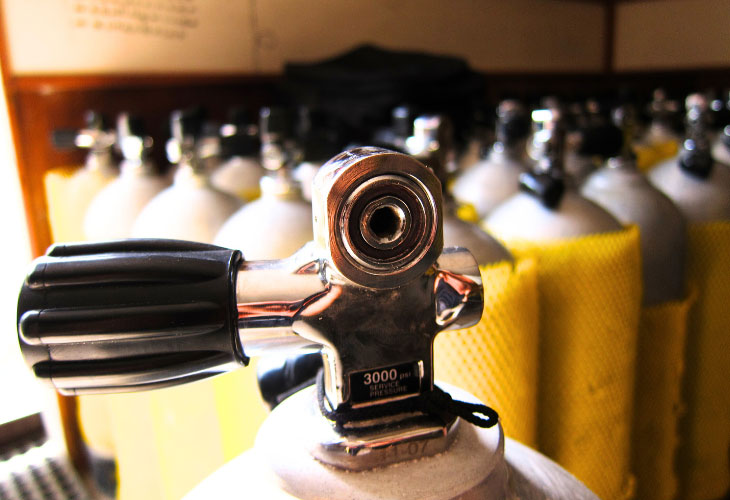PADI Youth Diving Programmes
Scuba diving isn’t just for grown-ups—children can dive too! Through PADI’s youth programmes, kids can safely explore the magic of the underwater world while learning about ocean life, teamwork, and self-confidence.
From first bubbles in a pool to their first open-water dive, every experience is guided by professional PADI instructors who make safety and fun the top priorities. Diving becomes more than an activity—it’s a journey of discovery.

Bubblemaker – The First Splash (Age 8+)
The PADI Bubblemaker programme is the perfect way to introduce children to diving. Held in a shallow pool, this fun and easy experience lets kids take their first breaths underwater using real scuba gear. There’s no pressure to learn technical skills—just pure excitement, laughter, and bubbles!
Many divers trace their lifelong passion back to this very first splash.
PADI Seal Team – Learning Through Fun (Age 8+)
Once your child is comfortable underwater, the PADI Seal Team takes the fun to the next level. Through exciting “AquaMissions,” kids learn diving basics, practise buoyancy, and explore marine conservation themes—all while having a great time.
Each mission builds confidence, curiosity, and a deeper connection with the ocean. It’s an ideal next step before moving on to real open-water diving.

Junior Open Water Diver – The Real Adventure Begins (Ages 10–14)
For young explorers ready for the real thing, the PADI Junior Open Water Diver certification opens up the ocean world. The course follows the same structure as the adult version, but with depth limits to ensure safety:
- Ages 10–11: Up to 12 metres (40 feet)
- Ages 12–14: Up to 18 metres (60 feet)
This is where the adventure truly begins—your child can join supervised dives alongside adults or PADI professionals and experience the thrill of real underwater exploration.
Building Ocean Awareness and Responsibility
Diving helps children see the ocean differently. Through direct experience, they learn why protecting marine life and reducing pollution matter. PADI’s youth courses naturally encourage eco-awareness, turning young divers into passionate ocean advocates.

Why Start Young?
Starting diving early helps children grow in confidence, patience, and respect for nature. It’s also a wonderful way to create lasting family memories—sharing dives, stories, and underwater adventures together.
Whether your child dreams of becoming a marine biologist or simply loves the sea, PADI’s youth programmes offer the perfect start to their underwater journey. Every bubble they blow brings them closer to becoming the next generation of ocean guardians.
Ready to Begin?
Give your child the chance to experience the magic of the ocean!
Contact us today to learn more or book their first PADI Bubblemaker or Junior Open Water Diver session. Let’s make their first dive unforgettable—because every young explorer deserves to discover what lies beneath the surface. 🌊
PADI Junior Open Water Diver Course
Click below for more Children’s Diving in Bali Information:
By Hafid, AMD-B’s 2025 Divemaster Intern









